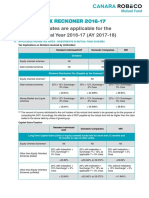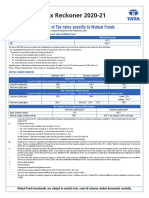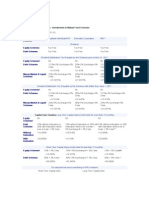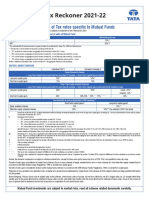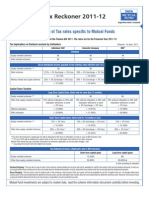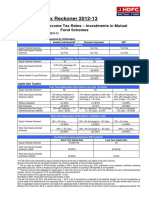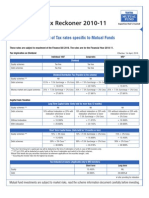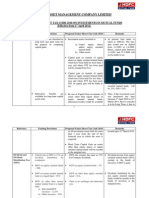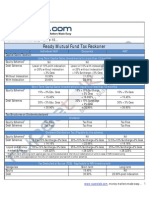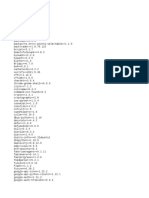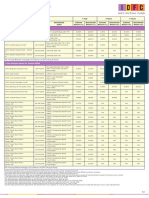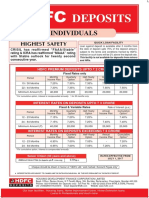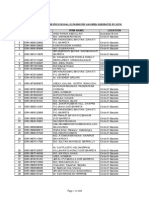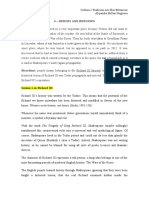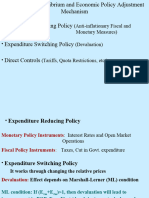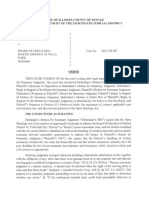0% found this document useful (0 votes)
38 views2 pagesEquity Oriented Funds (Subject To STT)
1. The document outlines tax rates for mutual fund investors in India for equity oriented funds and other than equity oriented funds.
2. For resident individuals, capital gains tax rates are 15% for short term gains and 10% for long term gains in equity funds. Dividend income is taxed at normal slab rates.
3. Tax rates vary for other categories of investors like domestic companies, NRIs, FPIs depending on whether the gains are short term or long term and type of mutual fund.
Uploaded by
AayushKumarCopyright
© © All Rights Reserved
We take content rights seriously. If you suspect this is your content, claim it here.
Available Formats
Download as PDF, TXT or read online on Scribd
0% found this document useful (0 votes)
38 views2 pagesEquity Oriented Funds (Subject To STT)
1. The document outlines tax rates for mutual fund investors in India for equity oriented funds and other than equity oriented funds.
2. For resident individuals, capital gains tax rates are 15% for short term gains and 10% for long term gains in equity funds. Dividend income is taxed at normal slab rates.
3. Tax rates vary for other categories of investors like domestic companies, NRIs, FPIs depending on whether the gains are short term or long term and type of mutual fund.
Uploaded by
AayushKumarCopyright
© © All Rights Reserved
We take content rights seriously. If you suspect this is your content, claim it here.
Available Formats
Download as PDF, TXT or read online on Scribd
/ 2









